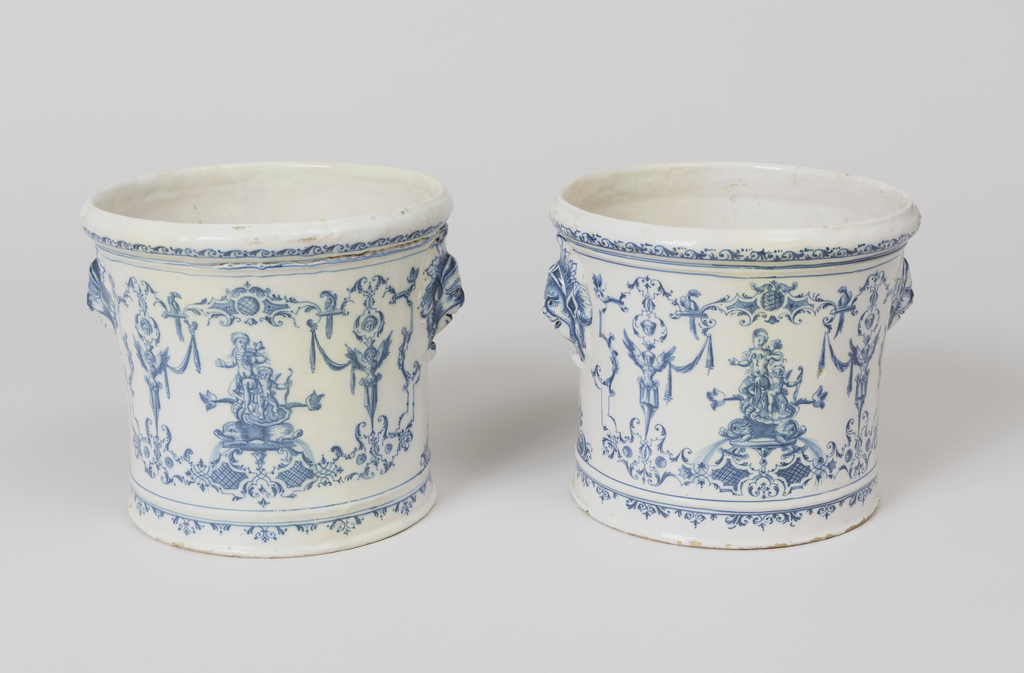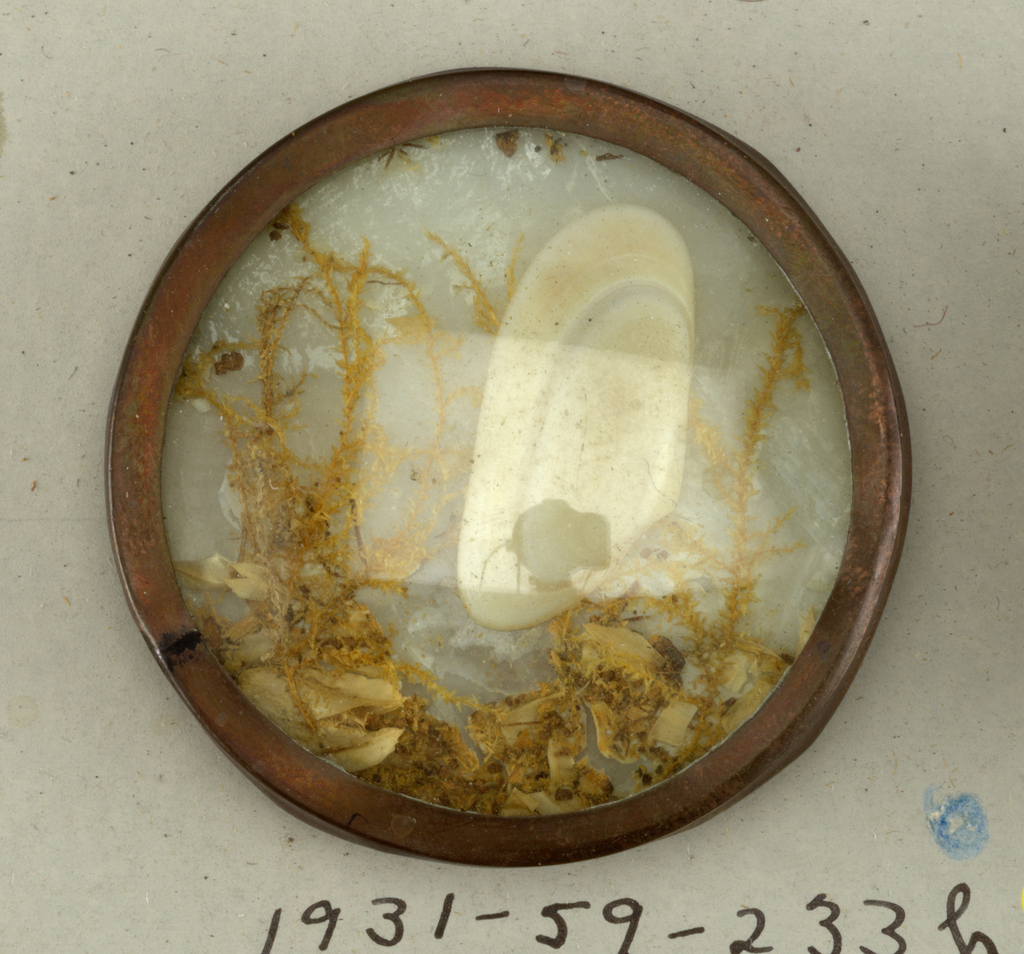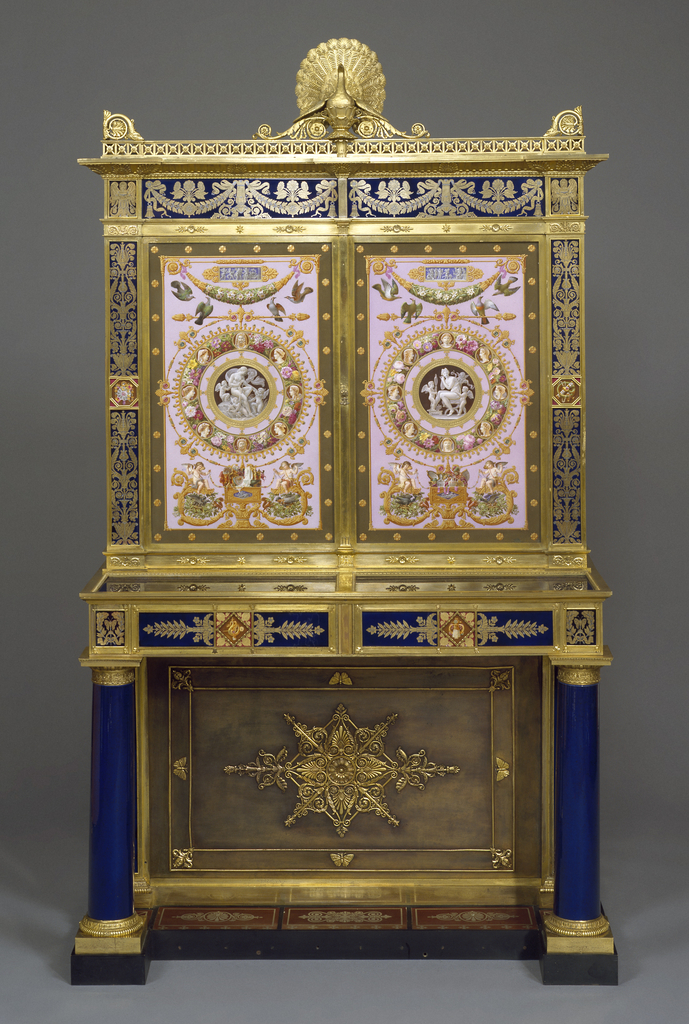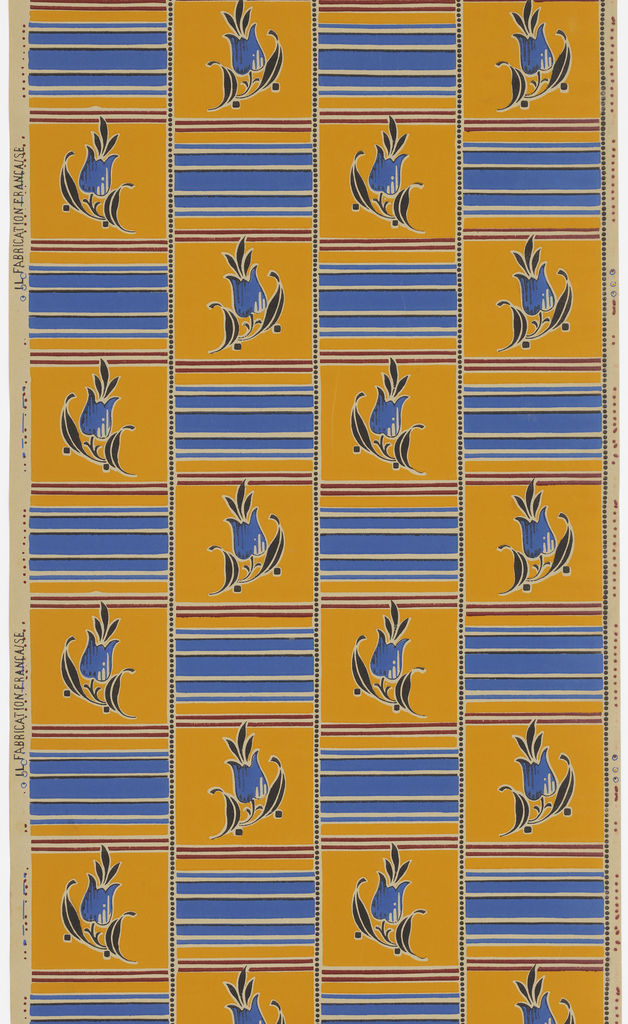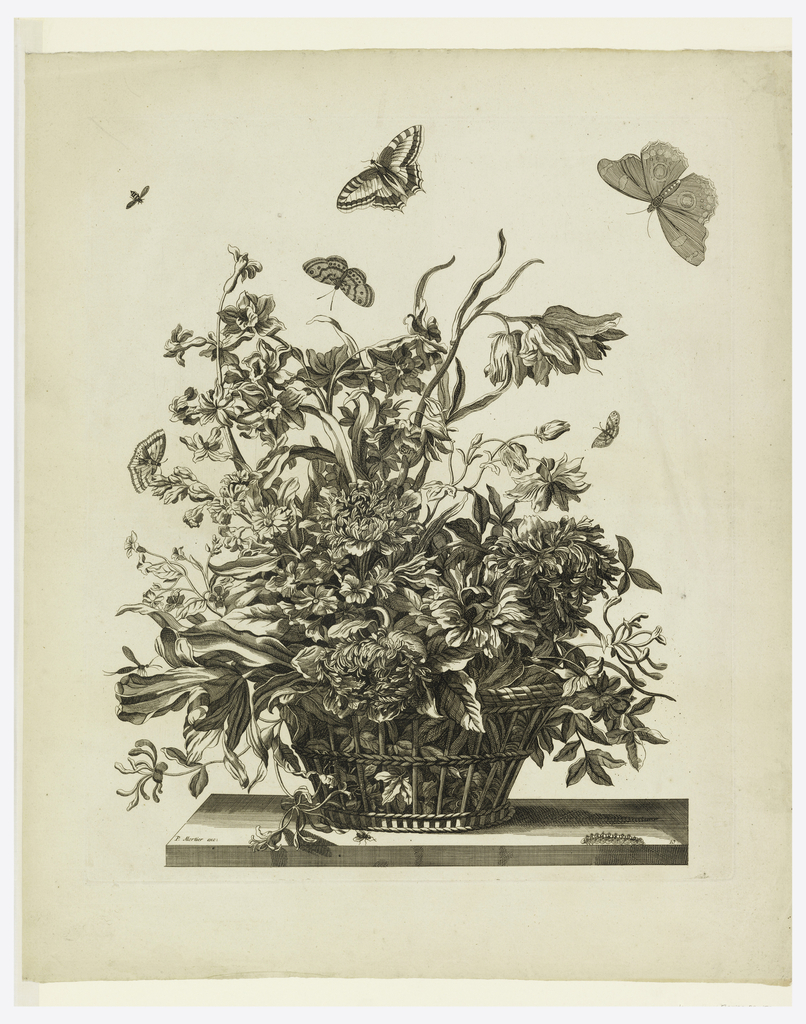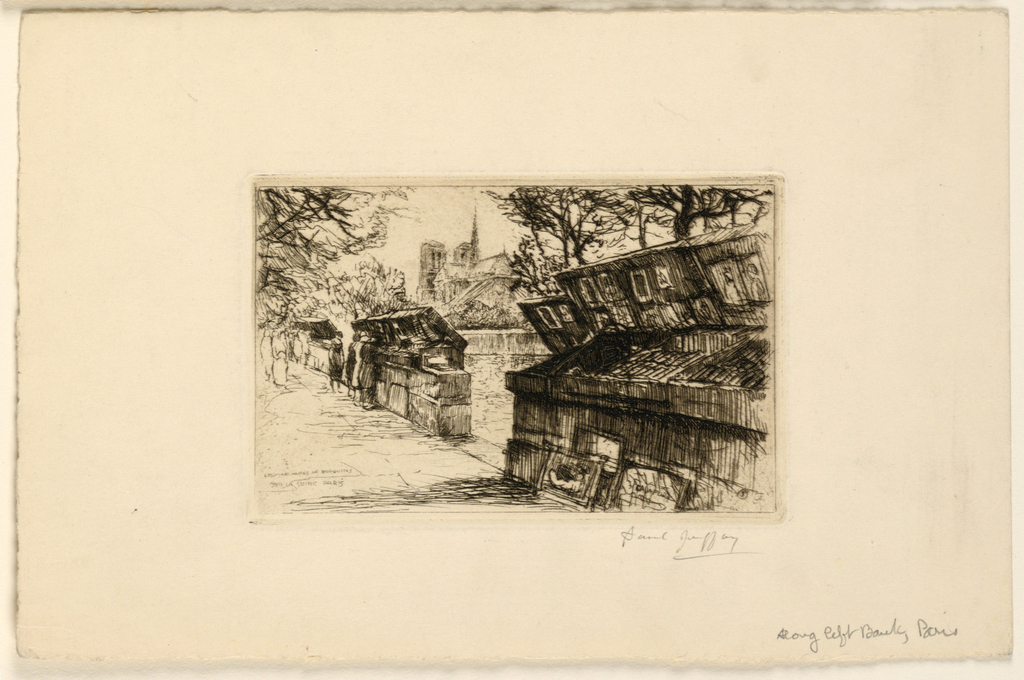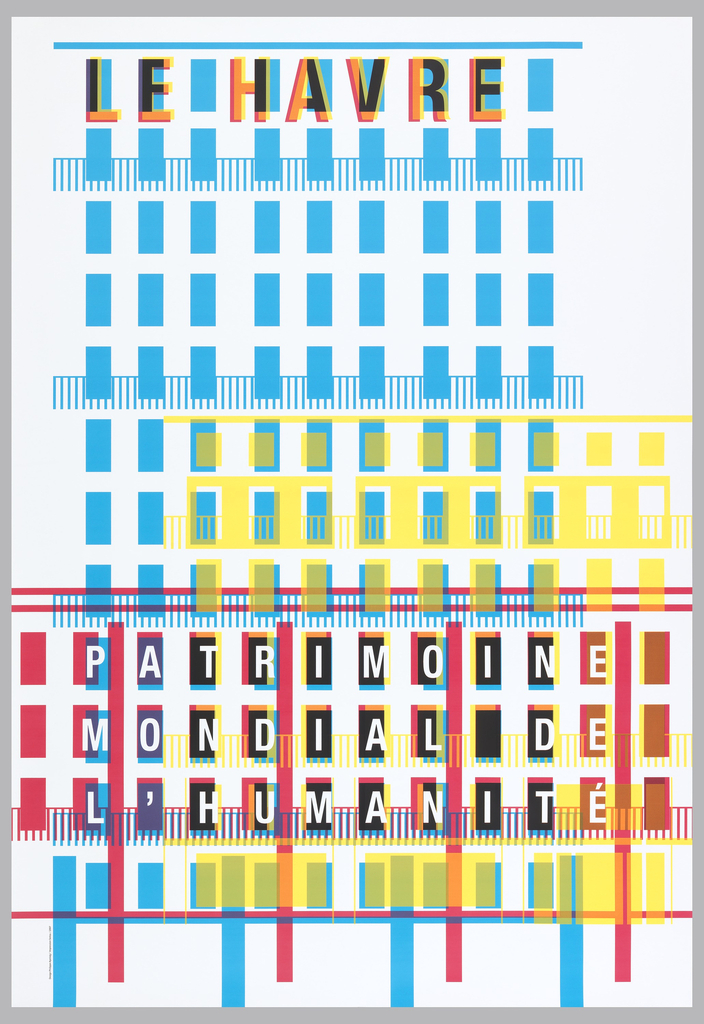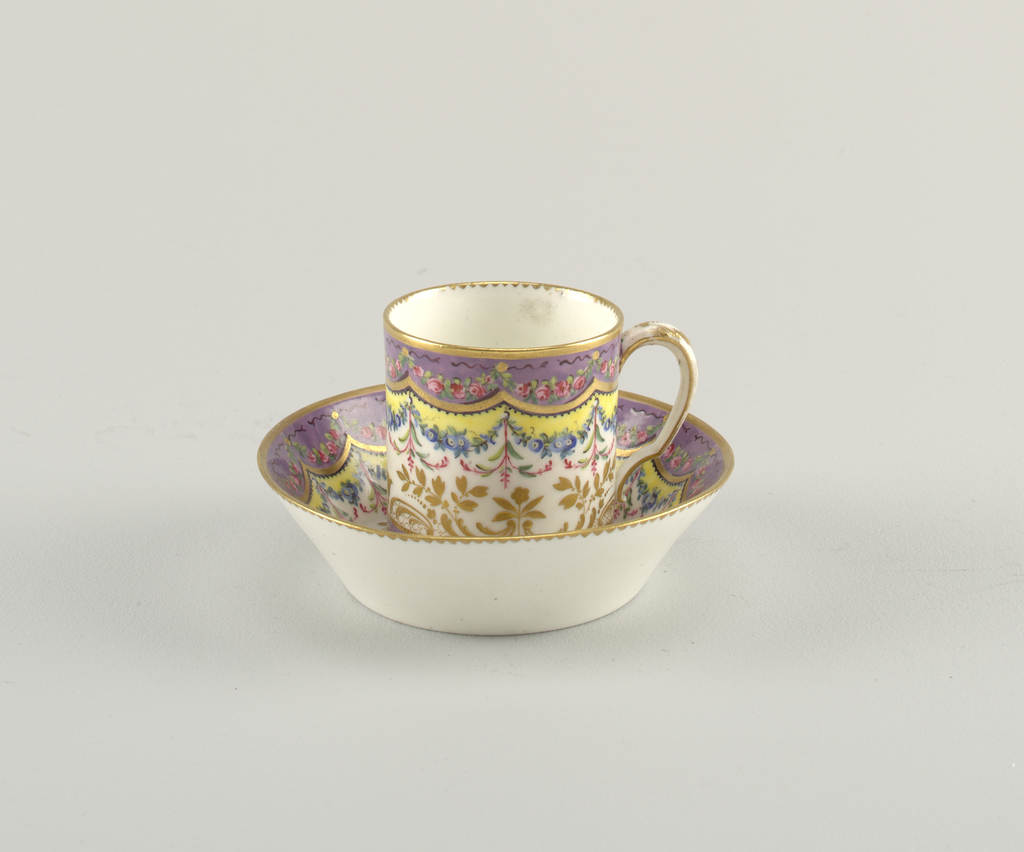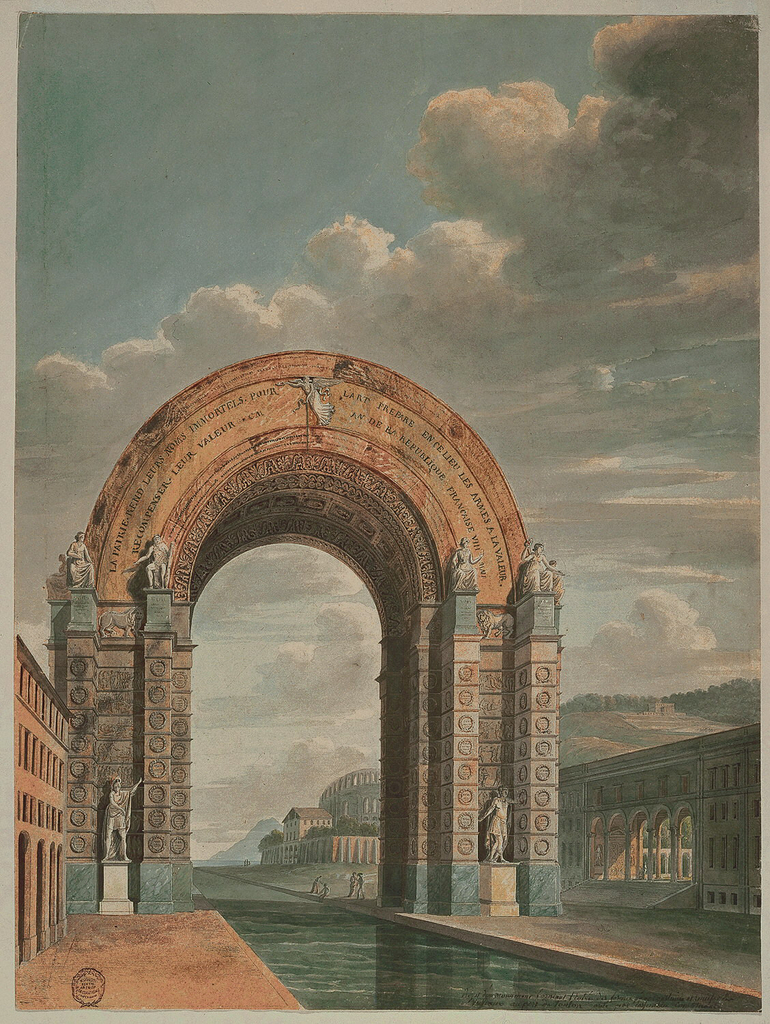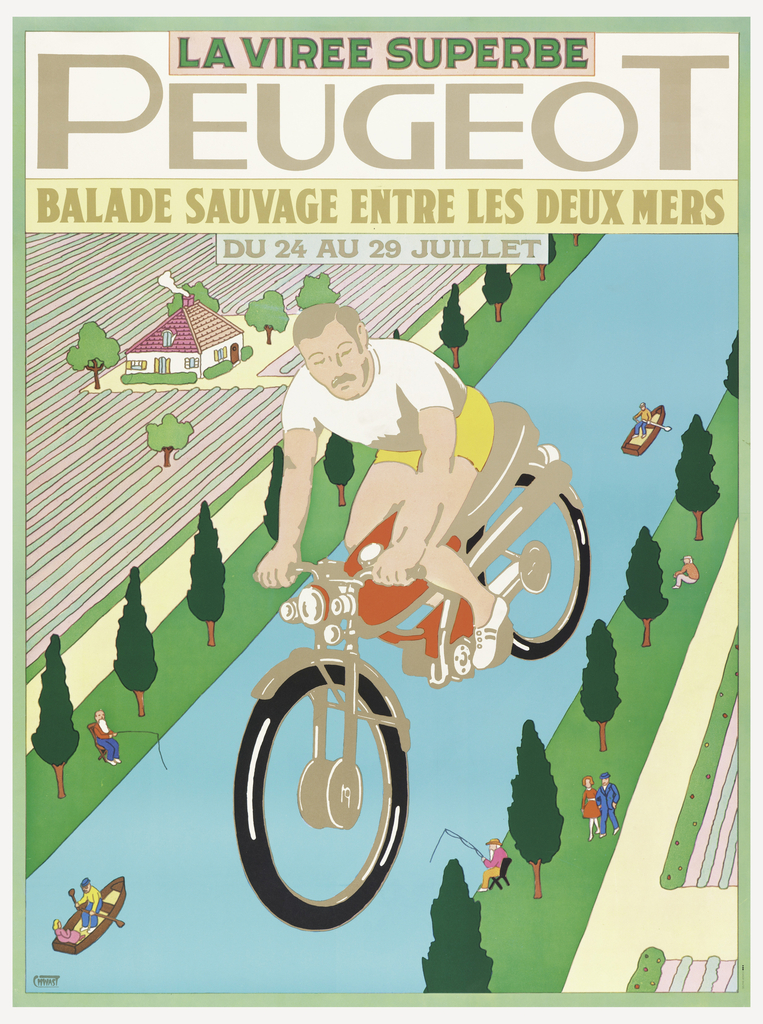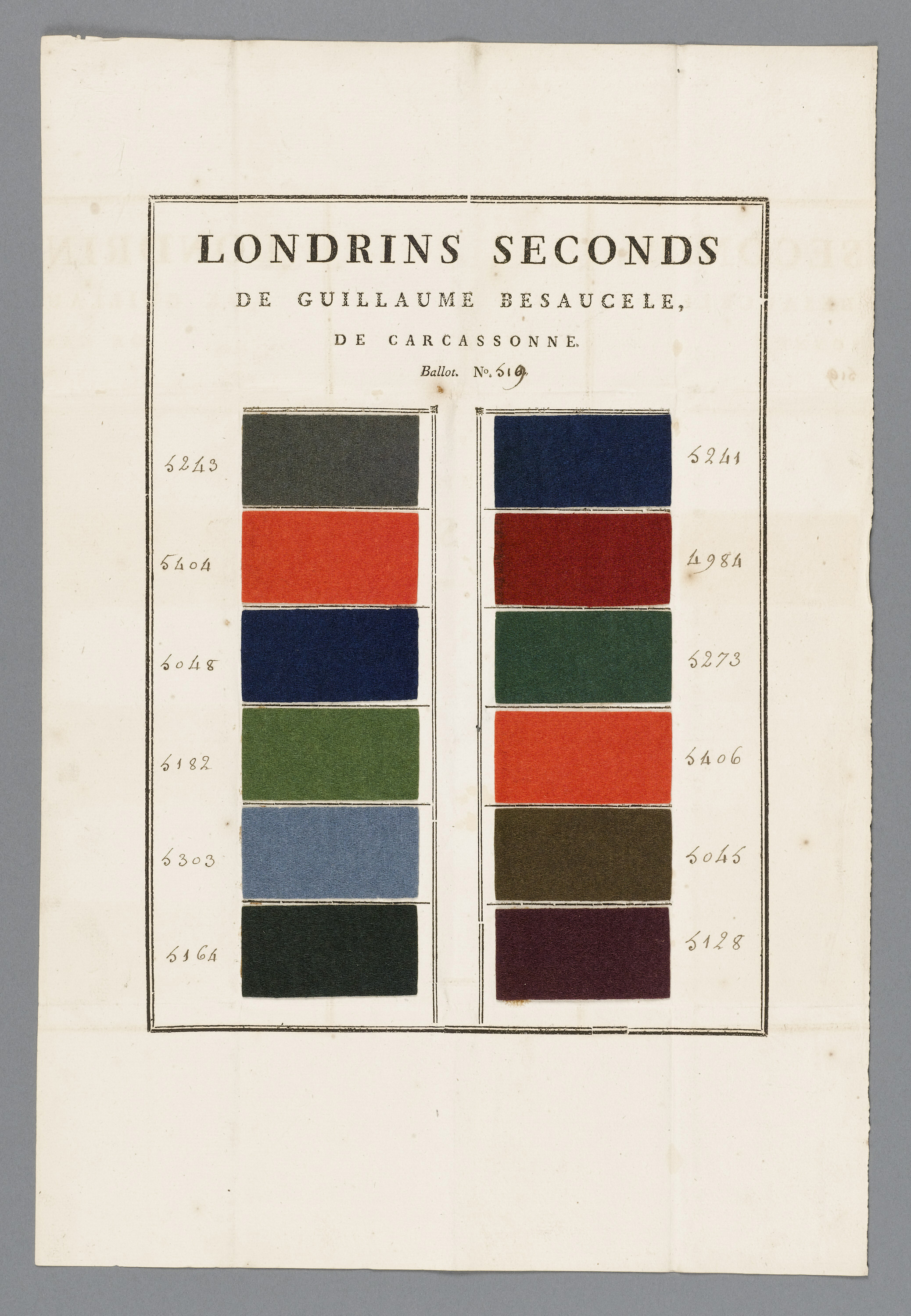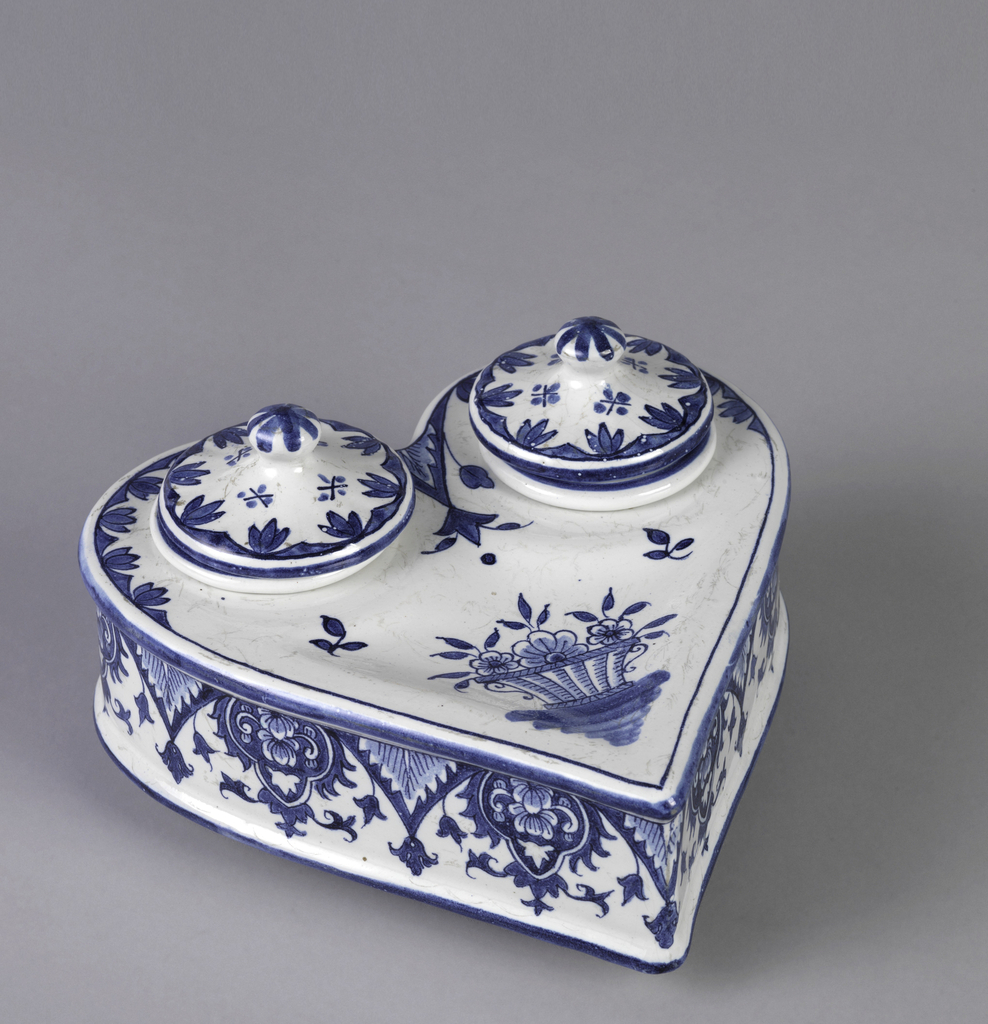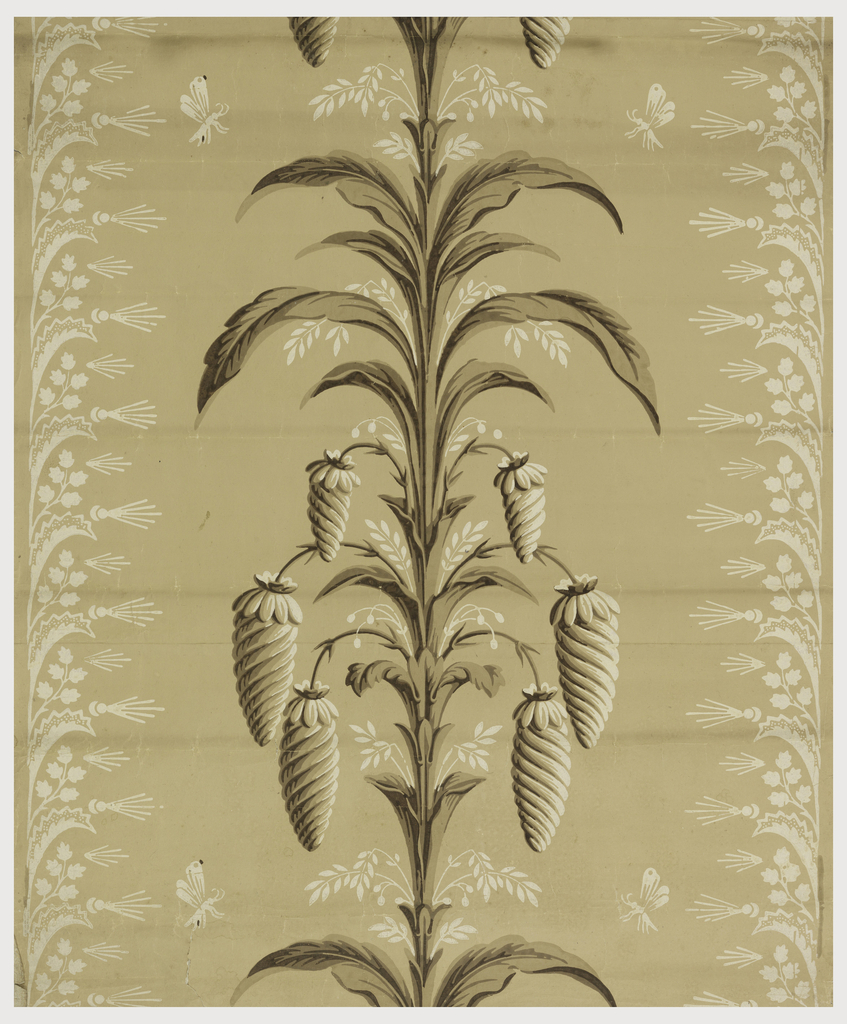In the days before under-counter wine fridges, seaux à bouteilles, buckets made of earthenware or porcelain, were filled with ice water and used to keep bottles of wine cool. Their use continues to this day in the form of metal ice buckets used to keep white wine chilled table-side at fancy restaurants. When these objects were made,...
This button, from a set of nine, offers the viewer a chance to peek into the age of Enlightenment, a period of time when the human mind was breaking free from the constraints of the Church and the limitations of the Middle Ages. The Renaissance, primarily spanning the fifteenth through sixteenth centuries, is often thought...
The theme of this Royal Jewel Cabinet from France, dated 1824-26, is no doubt indulgence in all forms – especially love and extravagance. Its rich iconography displays symbols of love and jewels, where antiquity is mixed with early-nineteenth century depictions of flowers.[1] The cabinet is constructed of porcelain plaques in a gilt-bronze armature. A golden...
This paper fascinates me, which explains why I acquired it for the museum collection. It is an inexpensive, Depression-era paper, but it packs a lot of punch. The design is reminiscent of ceramic tiles which makes it a less than formal pattern and gives it more of a functional aesthetic. While this certainly could be...
Lecture by Hubert Barrère, Art Director of Maison Lesage, the venerable French embroidery company. Discussion follows with Matilda McQuaid, Deputy Curatorial Director and Head of Textiles. For nearly a century, Maison Lesage has created extraordinary embroidered designs for Elsa Schiaparelli, Pierre Balmain, Christian Dior, and many other revered designers. In 2002, Chanel acquired Maison Lesage...
Jean-Baptiste Monnoyer (French, 1626-1699 ), a painter, designer and engraver, created many prints like this work, Plate 10 from Set of Flowers in a Basket which is dated to 1680. Early flower prints were primarily used for botanical textbooks, but by the end of the seventeenth century, they were considered a higher artistic medium. Prints like...
Ymer&Malta Director Valérie Maltaverne presents on the philosophy and process of her company, and discusses three exceptional works from the studio’s marquetry collection designed by Benjamin Graindorge, Sylvain Rieu-Piquet, and Sebastian Bergne. About Ymer&Malta Revisiting the French traditions of “savoir-faire” marquetry, inlaying, and carving, French design studio Ymer&Malta creates limited edition contemporary furniture and design...
This lithograph, by artist Paul Jeffay (1898-1957) depicts the Left Bank of Paris, France, on what appears to be the Quai de la Tournelle. The main focus of the piece is on the bouquinistes, green boxes that line the Seine in the center of Paris, out of which booksellers sell used and antiquarian books. In...
During the second World War, the French city of Le Havre was severely bombed. August Perret, a pioneering French modernist architect, was tasked with rebuilding the city. Perret’s reconstruction is considered exceptional for its seamless integration of the city’s extant historic structures with modern concrete construction and design innovations. Perret’s new buildings for Le Havre...
Designated as the “Royal Porcelain Manufactory” during the mid-eighteenth century under the reign of Louis XV, the Sèvres Porcelain Manufactory needs little introduction as one of Europe’s most innovative and influential porcelain manufacturers during the eighteenth century. Eight years before Sèvres manufactured this cup and saucer in 1780, Louis XVI had become king, and the...
This drawing is the creation of Jean-Jacques Lequeu, a French architect and draftsman of the late 18th and early 19th centuries. A faint inscription in the bottom right corner of the drawing announces that it is a project for a monument at the entrance to the navy arsenal in Toulon, a major port in the...
France is known for cycling, hosting the famous – and now infamous – Tour de France bike race each summer. In 1968 Peugeot jumped on board the notion of a Tour de France and promoted a trip by vélometeur (or moped) through various departments of the country. One section, pictured in this poster by American...
Early in the eighteenth century, France was eager to imitate British success in exports of woolen textiles, especially to the Levant, an area roughly defined as a region of the eastern Mediterranean including Turkey and Egypt and points in between. By 1720, the French had vastly improved the quality of their woolens, and a system...
This delicate blue and white faience inkstand transports us back to a time in which letter writing was an integral part of daily communications. The inkstand was made in Rouen, an early center of production for French ceramics known as faience, which is tin-glazed earthenware. Between 1644 and the end of the eighteenth century, it is...
A highly symmetrical stalk grows confidently up the center of this sidewall panel, which was manufactured in France in the early nineteenth century. Acanthus-like foliage and strange, swirly pods droop heavily downwards, accented by wispy little branches of leaves and un-opened blossoms. Winged insects descend towards the stalk from either side. Presumably their mission is...
